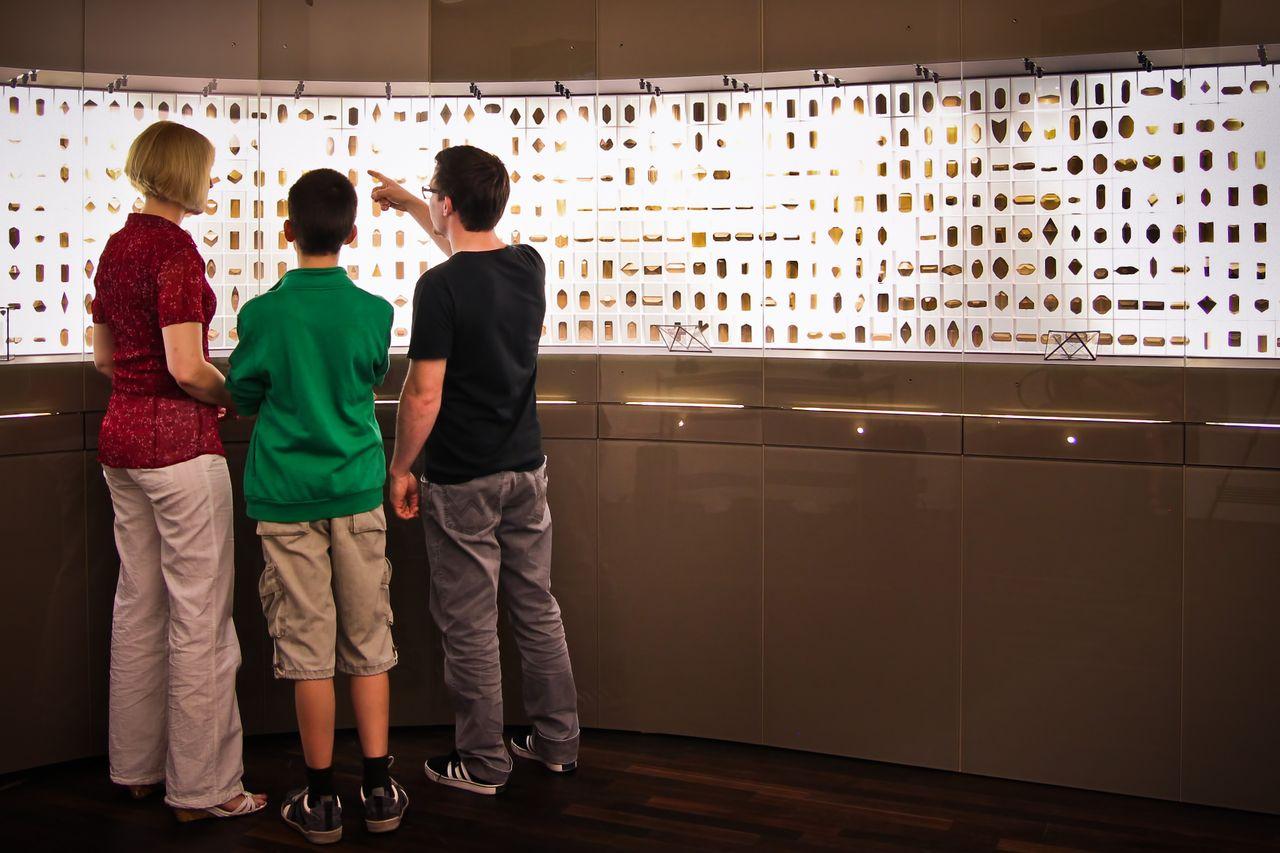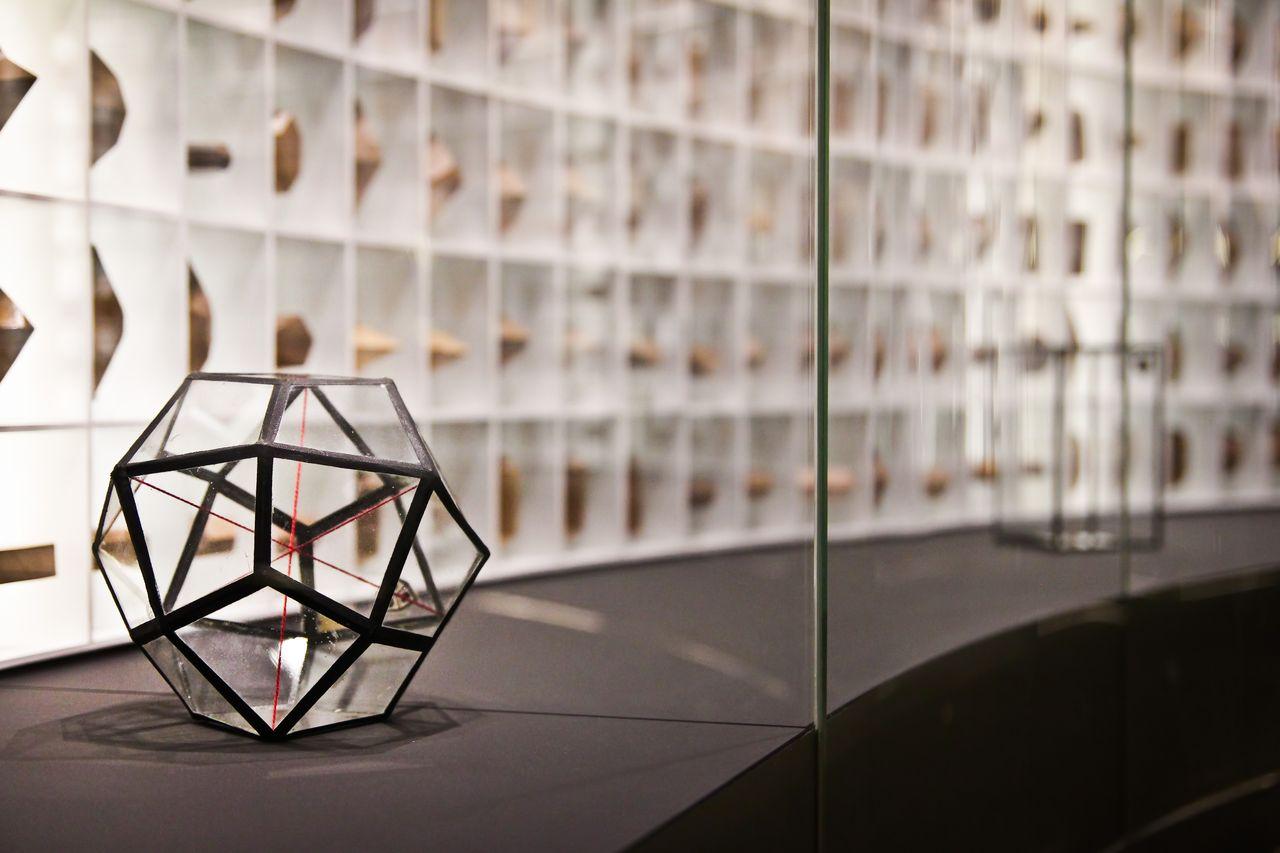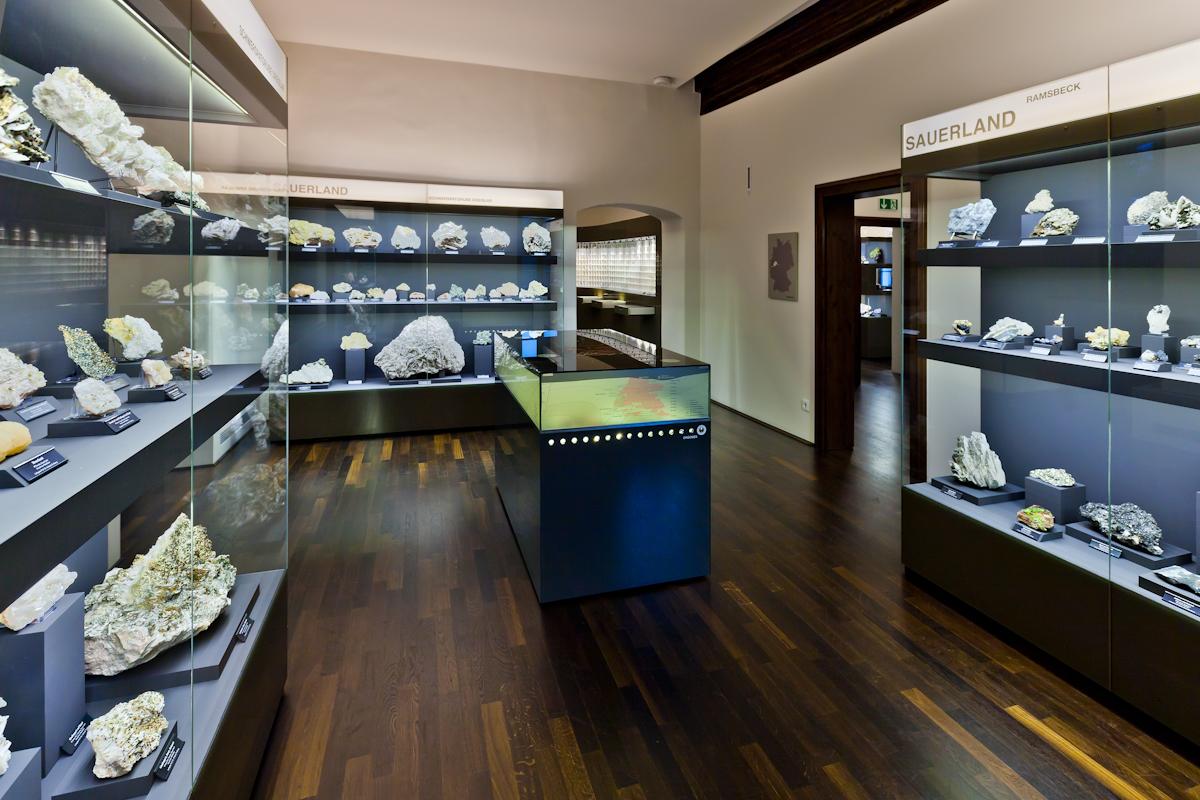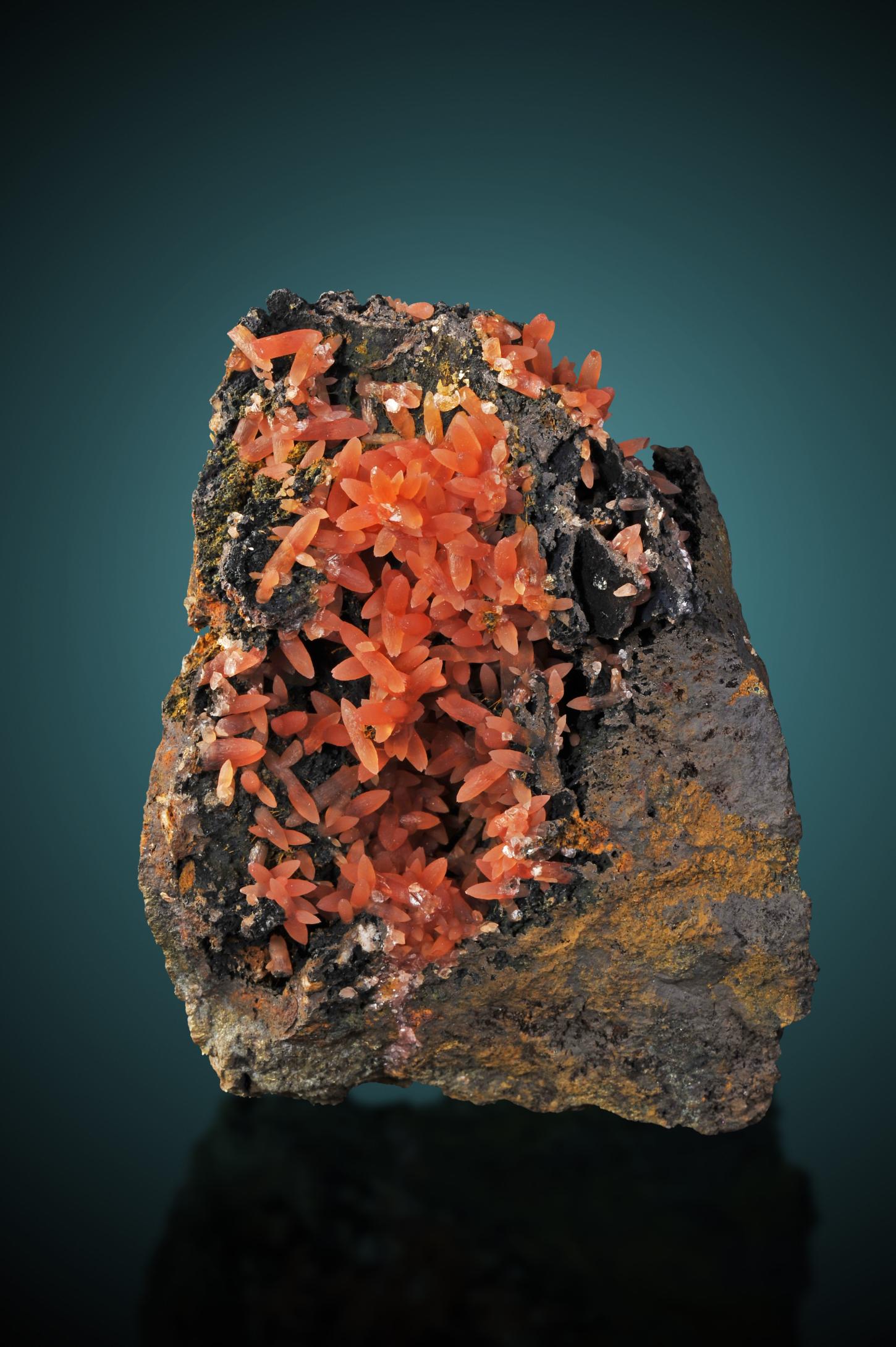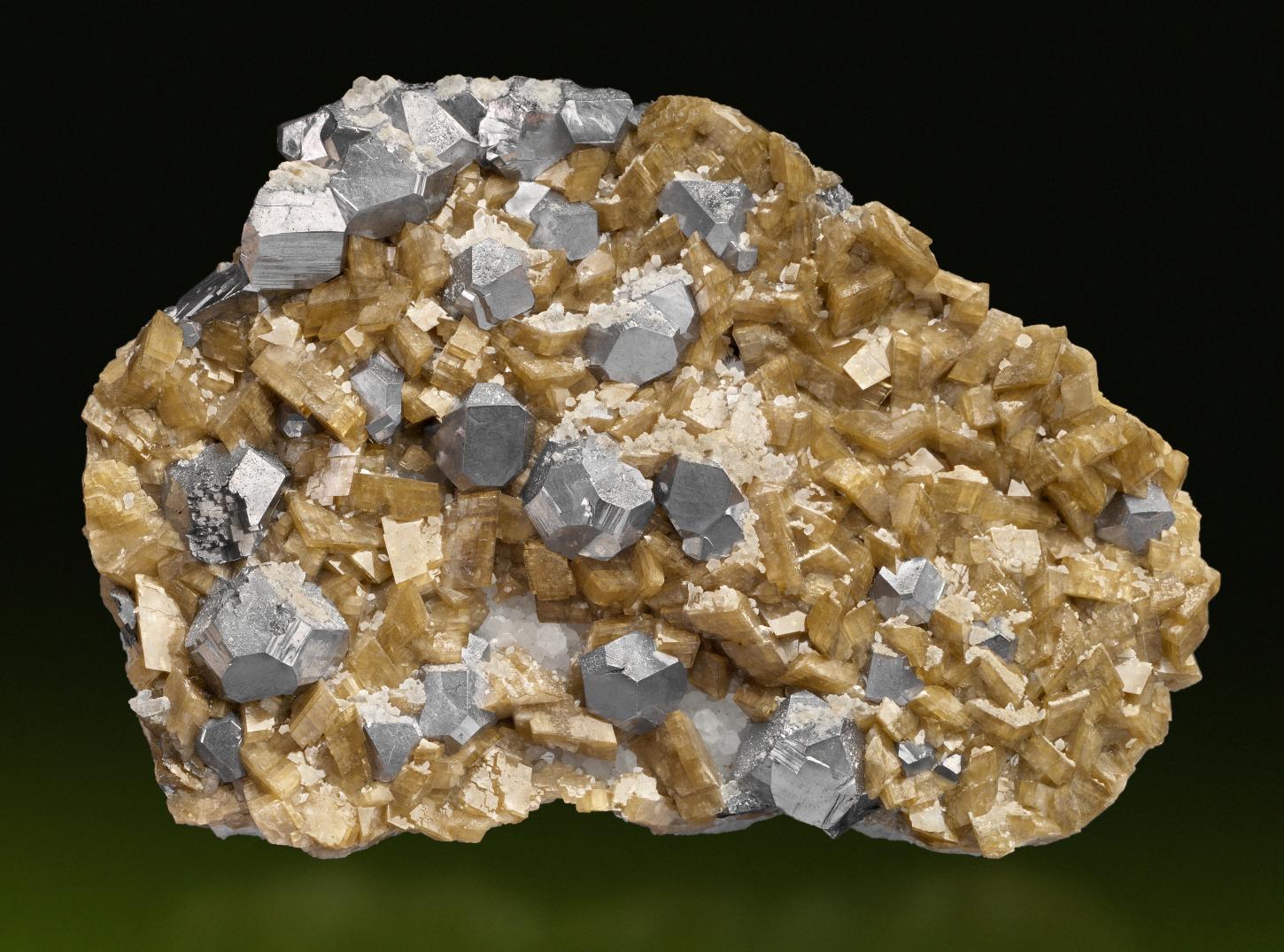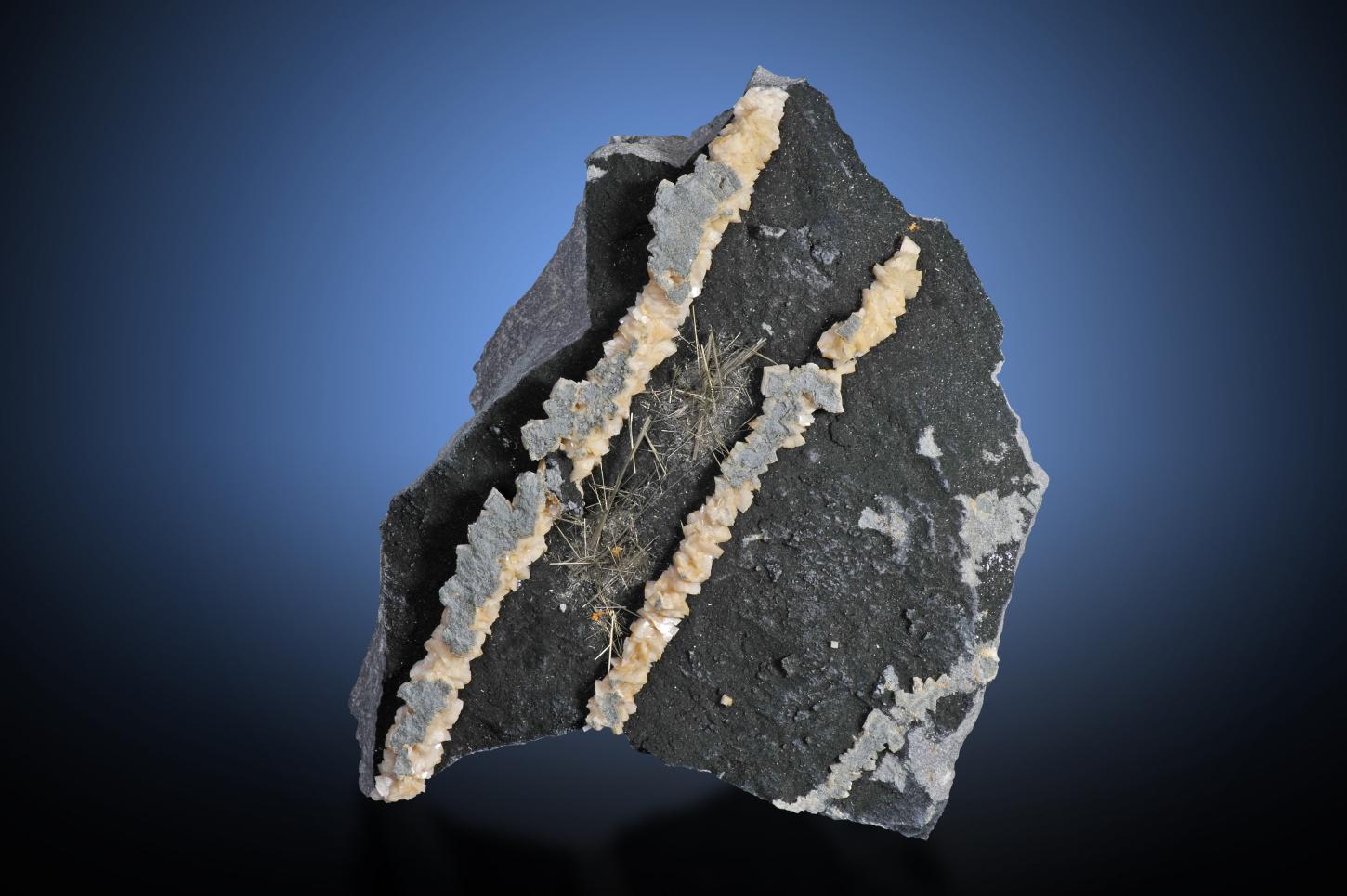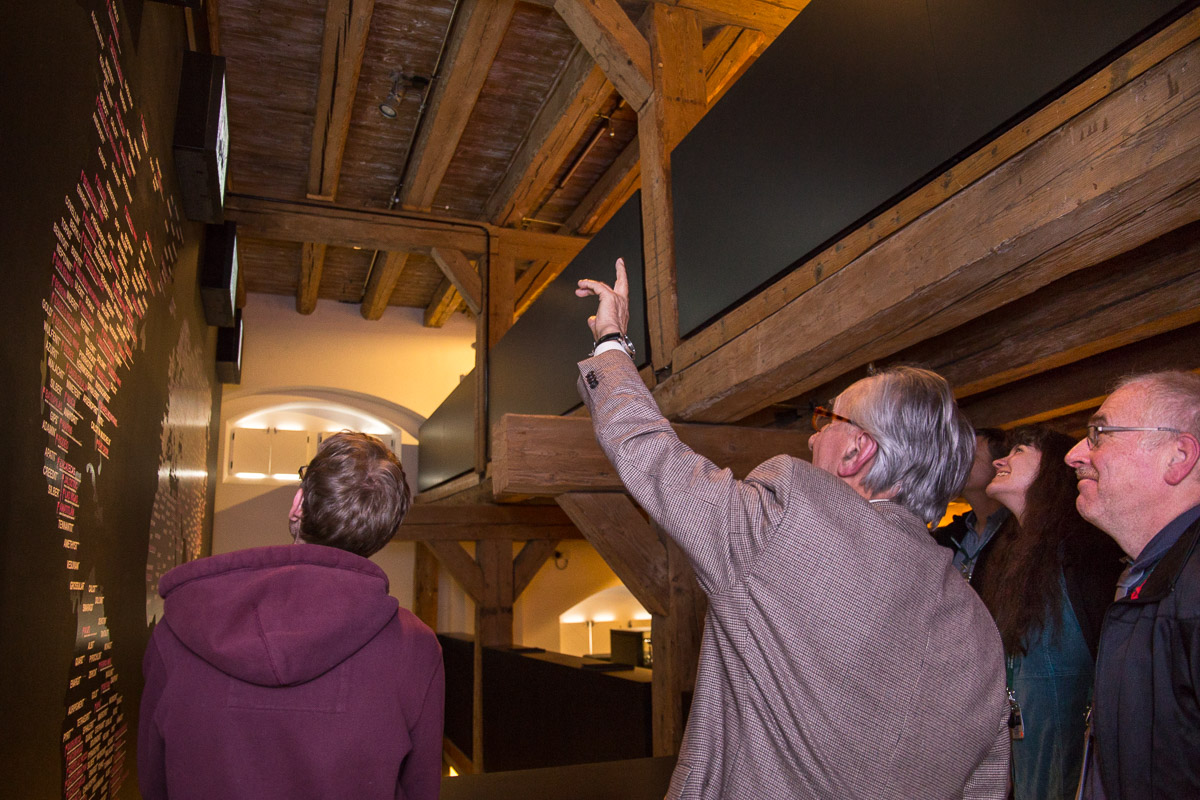Gallery of models
A complete collection of historical crystal models from the Krantz company, dating back to the 1880s, can be found on the first floor. The 743 different wooden models give you an impression of the almost inexhaustible variety of forms in the mineral kingdom.
In addition, you can learn more about the development of crystallography at the Freiberg Mining Academy and the use of these models in teaching by inspecting models from different eras and materials. Among the displayed exhibits are also crystal models made of lead which Abraham Gottlob Werner made especially for his teaching at the end of the 18th century.
Sauerland
Almost an entire room is dedicated to the Dreislar deposit in Sauerland. See the huge barite specimens on which gold-coloured and highly lustrous chalcopyrite crystals and, more rarely, strontianite can be found. Get an impression of the different forms of the minerals in this deposit.
Not only barite, but also galena, marcasite and many other minerals from the deposits and quarries of the Sauerland can be discovered in the showcases.
Peine-Salzgitter, Weserbergland, Münsterland, Ruhrgebiet
Various sedimentary iron ore deposits can be found in the areas of the northern Harz foreland and the lowlands of Niedersachsen. In this part of the exhibition, you can discover the iron-manganese minerals, such as groutite or ramsdellite, which are often outstandingly crystallised in these deposits.
You will also be able to discover many minerals from the former coal mines of the Ruhrgebiet. Once the largest industrial region in Europe, some of the coal mines were also enriched with sulphidic ores such as pyrite or millerite. This has led to the fantastic mineral formations that decorate the exhibition today.
Siegerland, Westerwald, Lahn-Dill, Taunus, Eifel
In the tri state area between Hessen, Nordrhein-Westfalen and Rheinland Pfalz you can find some of the most famous mineral sites in Germany. You can see magnificent specimens of pyromorphite from Bad Ems and the largest bournonite specimen in the German-speaking region.
Many of the mineral samples exhibited here are among the best of their type. In the showcases, you will mainly find specimens from historical mines in which no more finds are possible today.
Thüringen, Mansfeld, Harz Mountains
The last room on the first floor is dedicated to minerals from the Central German region. In addition to first-class specimens with antimony minerals from the world-famous deposit of Wolfsberg in the Harz, there are also fantastic calcites from St. Andreasberg and huge fluorites from Rottleberode to enjoy.
From the salt deposits in Thuringia originate large halite crystals and probably the best carnallites in the world, which were discovered only a few years ago.
You can also see historic manganese minerals from Ilfeld and the Thuringian Forest among the specimens. These ores were originally mined for the glass industry in Venice.
Raspberry spar - Delicious?
The striking rhodochrosite crystals on this specimen from the Wolf mine near Herdorf are often called raspberry spar because of their colour. Rhodochrosites from Herdorf are among the best representatives of this mineral type and are world famous.
Did you know that some deep red rhodochrosite crystals from the world's best locality for this mineral are exhibited in the Africa Hall of terra mineralia?
What is a "Neudorf type"?
Galena crystals from Neudorf in the Harz Mountains belong to the worldwide classics among mineral collectors. The ore mineral is almost always associated with yellow-brown siderite in the Lower Harz Mountains, which forms a great contrast to the steel-grey galenites.
The crystals on this specimen are formed as the so-called "Neudorf type", a combination of different crystal shapes of cube, octahedron and rhombic dodecahedron. These different shapes are also found in the crystal models from the "Gallery of Models".
Hairy affair
Such large millerite crystals have made the Ramsbeck mine to one of the most famous mineral sites in Nordrhein-Westfalen. The mineral is often called "Haarkies" ("hairore") because of its thin and needle-like crystals. Chemically, it is a nickel sulphide that is still mined in other deposits today.
